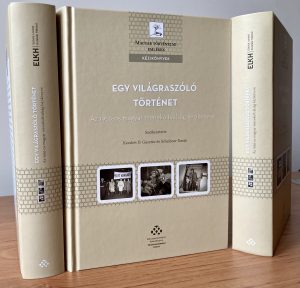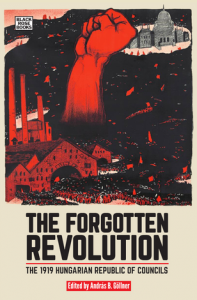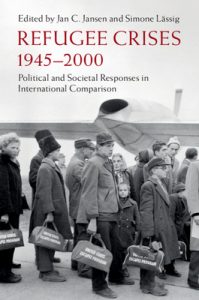 I Have Demons
I Have Demons
By: Christopher Adam
Published by: Iguana Books in November 2018
(Fiction)
A jaded young priest of a dwindling parish faces a man with a terrible secret. A lonely pensioner spends a Thanksgiving she’ll never forget at a local diner, served by an acerbic waitress who has finally found her ticket out of there. A recent university graduate from small-town Ontario leaves home with nothing to his name but the hope of a new life in the city and places all his trust in a charismatic yet dubious life coach.
Lyrical language, at times haunting, and moments of dry humour weave through the three novellas in this collection. Set in and around Ottawa, Ontario, these stories examine the peripheries of society. In the characters’ journey toward the centre, they navigate flawed human relationships, seek to encounter a divine presence that is at once implicitly present yet dreadfully distant, and struggle to negotiate the conditions of redemption.
I Have Demons can be purchased through:
-
- Amazon.ca (Kindle and Paperback)
- Amazon.com (Kindle and Paperback)
- Barnes & Noble (Nook and Paperback)
- Chapters – Indigo (Kobo and Paperback)
- Books on Beechwood — 35 Beechwood Ave, Ottawa, ON K1M 1M1. (Paperback)
More news on I Have Demons
- An author interview
- The Literary Titan reviews I Have Demons
- A reading from my book “I Have Demons” in Cape Vincent, New York
- A theologian’s thoughts on my book “I Have Demons”
- British author Matt McAvoy reviews “I Have Demons”
- I Have Demons — Ottawa book launch
***
 100 Stories from the History of St. Joseph’s Parish — Written by Terry V. Byrne and 50 Authors
100 Stories from the History of St. Joseph’s Parish — Written by Terry V. Byrne and 50 Authors
Editors: Christopher Adam, Terry V. Byrne & Elizabeth Behrens, The Spirit Lives, Ottawa, 2025 (Non-fiction)
I co-edited this 438-page book on the history of St. Joseph’s Parish from 1856 to the present day, and wrote the Preface, as well as chapters 14, 15, 34 and 100. Read Chapter 100 here, published as an excerpt from the book on the OMI Lacombe Canada website.
Parish communities are microcosms of the world around them, and this is especially true of Ottawa’s St. Joseph’s Parish. Established in Bytown in 1856, the Parish’s history is closely intertwined with the Canadian nation-building project and with the development of Ottawa from a provincial backwater to a fledgling country’s new capital. Through the voices of parishioners both past and present, as well as archival research, this book tells the stories of not only a faith community, but recounts how one parish navigated the seismic changes of the nineteenth, twentieth and early twenty-first centuries, and how the parishioners of St. Joseph’s helped shape their city and country. In a history spanning three centuries, St. Joseph’s Parish has often made headlines and sometimes pushed the proverbial envelope. The Oblates’ missionary outlook and their commitment to reaching the poor and the most marginalized, passionate and sometimes feisty leaders, an engaged and outspoken laity deeply committed to the Preferential Option for the Poor, the promise and challenge of the Second Vatican Council, and a Sandy Hill neighbourhood that changed in dramatic ways are all represented in our parish’s stories. Come join us, as we bring our parish’s and our city’s past to life through stories.
***
 The 1956 Hungarian Revolution — Hungarian and Canadian Perspectives
The 1956 Hungarian Revolution — Hungarian and Canadian Perspectives
Edited by: Christopher Adam, Tibor Egervari, Leslie Laczko, Judy Young
Published by: University of Ottawa Press in May 2010
(Academic non-fiction)
In October 1956, a spontaneous uprising took Hungarian Communist authorities by surprise, prompting Soviet authorities to invade the country. After a few days of violent fighting, the revolt was crushed. In the wake of the event, some 200,000 refugees left Hungary, 35,000 of whom made their way to Canada. This would be the first time Canada would accept so many refugees of a single origin, setting a precedent for later refugee initiatives. More than fifty years later, this collection focuses on the impact of the revolution in Hungary, in Canada, and around the world.
Book Chapters
 Liberals, Conservatives, and Mavericks — On Christian Churches of Eastern Europe since 1980 (ed. Frank Cibulka & Zachary T. Irwin), Central European University Press, Budapest, 2024 (Academic non-fiction)
Liberals, Conservatives, and Mavericks — On Christian Churches of Eastern Europe since 1980 (ed. Frank Cibulka & Zachary T. Irwin), Central European University Press, Budapest, 2024 (Academic non-fiction)
Chapter by Christopher Adam: A Church on the Margins — Reverend Gábor Iványi and the Hungarian Evangelical Fellowship (pgs. 185-201).
My chapter explores the policy and social outreach work of Reverend Gábor Iványi, a Methodist pastor and former parliamentarian. Since 1989, Hungarian churches have played an important role in Hungary’s national discourse, even while Hungarian society itself has been relatively secular. The Roman Catholic Church, the Greek Catholics, and most Protestant denominations have occupied a place on the right of the political spectrum, attempting to ensure that patriotic narratives of Hungarian identity and the nation remain infused with Christian symbolism and imagery. However, perhaps the most prominent exception among the Christian faithful is Reverend Gábor Iványi’s Methodist community, notably the Hungarian Evangelical Fellowship. Reverend Iványi served as a Member of Parliament in the caucus of the Alliance of Free Democrats (SZDSZ) during the transition to democracy, and for eight years in the period that followed. Over the decades, Iványi has likely been more intentional in living the Social Gospel, and in advocacy work among the marginalized, than any other Christian religious leader in Hungary with national name recognition. Yet an equally noteworthy part of Iványi’s legacy is how he helped to shape public policies and narratives around the relationship between the nascent Third Republic of Hungary after 1989 and the country’s religious groups and denominations.

The Handbook of the 1956 Hungarian Refugees: Hungarian edition — Egy világraszóló történet. Az 1956-os magyar menekültválság kézikönyve (ed. Gusztáv D. Kecskés & Tamás Scheibner), Történettudományi Intézet, Budapest, 2022 (Academic non-fiction)
Country chapter on Canada in Part 5 by Christopher Adam (pgs. 465-476)
At the time of the Hungarian 1956 refugee crisis, Canada stood at political and social crossroads. The fact that Canada accepted proportionally the largest number of fifty-sixers of any country after the suppression of the uprising in Hungary—more than 38,000 in the months following the repressed revolt—was both the product of domestic political considerations in Canada, and the federal government’s response to the unexpectedly intense pressure from the press and Canadian society more generally to chart a humanitarian course in helping the refugees. In an era when a larger number of Canadians owned television sets than ever before, the six o’clock news coverage of 1956 brought much closer to home dramatic events unfolding in a distant land. (Front page news coverage of the refugee crisis had much the same impact.) For Canadians, this turned 1956 into the first truly “televised” uprising at a time when anti-Soviet public opinion in the Cold War West was already galvanized. The Liberal government of the ageing Prime Minister Louis St-Laurent struggled to play “catch up” with the deep desire on the part of the media and society to provide more assistance to fifty-sixers than the cabinet was initially prepared to offer. The Liberals were also heading into a federal election after having been in power for more than 20 years, finding themselves in a paradoxical situation. On the one hand, they often perceived themselves as the “natural” default leaders of Canada and the only viable governing party, while also being on the cusp of what increasingly felt like the end of an era.
 The Forgotten Revolution: The 1919 Hungarian Republic of Councils (ed. András B. Göllner), Black Rose Books, Montreal, 2022. (Academic non-fiction)
The Forgotten Revolution: The 1919 Hungarian Republic of Councils (ed. András B. Göllner), Black Rose Books, Montreal, 2022. (Academic non-fiction)
Chapter 7 by Christopher Adam: The Exiled Voice of the 1919 Commune. (pgs. 184-203)
My chapter in this anthology explores the establishment of the Hungarian Communist diaspora in Canada following the collapse of the 1919 Commune. This chapter examines the efforts of Hungarian Communist migrants to Canada to keep the language, the vocabulary and the spirit of the 1919 Commune alive in a hostile environment. The leaders of the Hungarian communist diaspora in Canada used the Kanadai Magyar Munkás (The Canadian-Hungarian Worker), a weekly newspaper, as a tool to build a collective consciousness and identity for Hungarian workers and agricultural labourers in Canada. Using strident revolutionary language reminiscent of the days of the 1919 Commune, the publication sought to organize traditionally oppressed demographic groups within the diaspora against Christian-Nationalist forces seen as doing the bidding of the Horthy regime in Canada. The writers, editors and publishers of the Munkás, took it upon themselves to speak out against not only the economic injustices they encountered in their new homeland in Canada, but those that plagued Hungary. At the same time, the Munkás’ failure, and that of the community built around it, was its cult-like behaviour. Its strident and militant polemics would continue to rouse the most zealous, but was alarming to those who were less ideologically committed and who were repelled by the excesses of the Bolsheviks and Stalinism.
 Refugee Crises 1945-2020: Political and Societal Responses in International Comparison. Eds. Jan C. Jansen and Simon Lässig), Cambridge University Press, 2020. (Academic non-fiction)
Refugee Crises 1945-2020: Political and Societal Responses in International Comparison. Eds. Jan C. Jansen and Simon Lässig), Cambridge University Press, 2020. (Academic non-fiction)
Chapter 7 by Christopher Adam: The 1956-1957 Hungarian Refugee Crisis and the Role of the Canadian Press in Opening the Doors to Asylum Seekers. Pgs. 157-180.
My chapter in this anthology, spearheaded by the German Historical Institute in Washington D.C., explores how it was first and foremost intense pressure from the Canadian press that prompted the Canadian federal government to take a leading humanitarian role in responding to the 1956/57 Hungarian refugee crisis, and welcoming more than 38,000 Hungarian fifty-sixers to Canada.